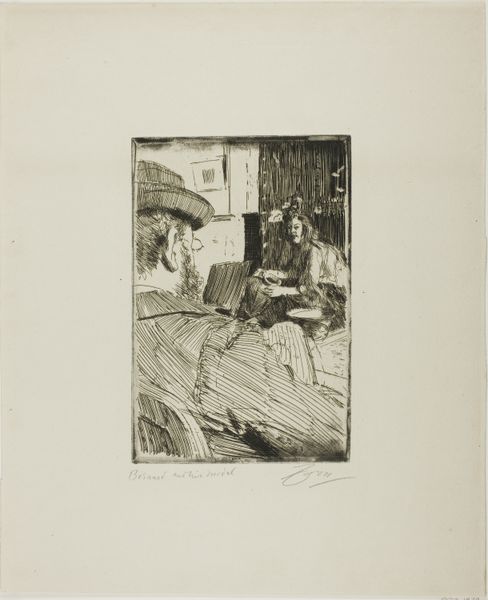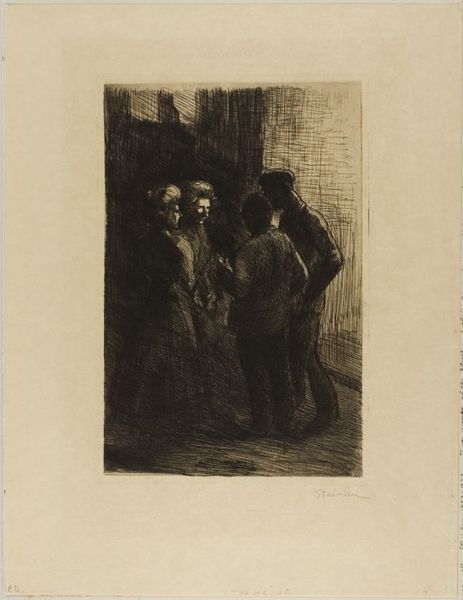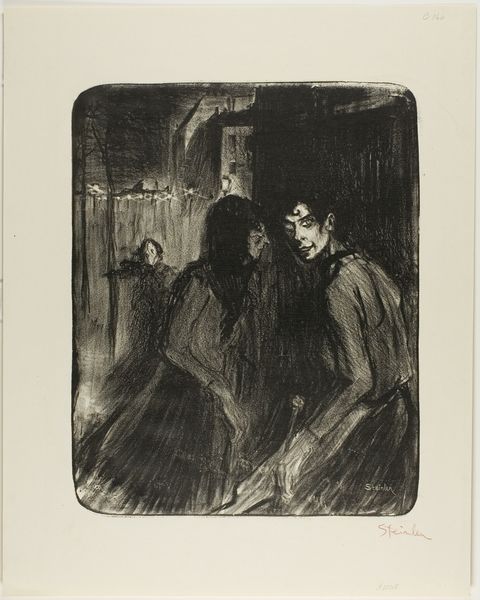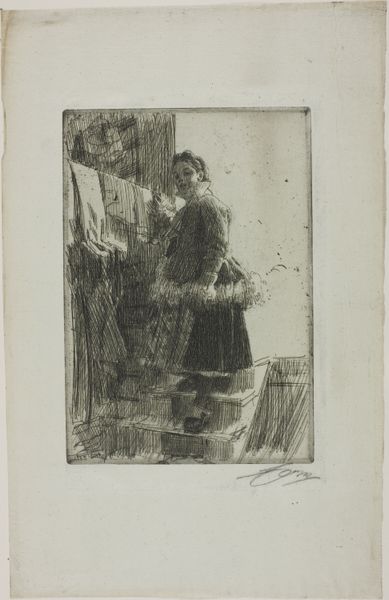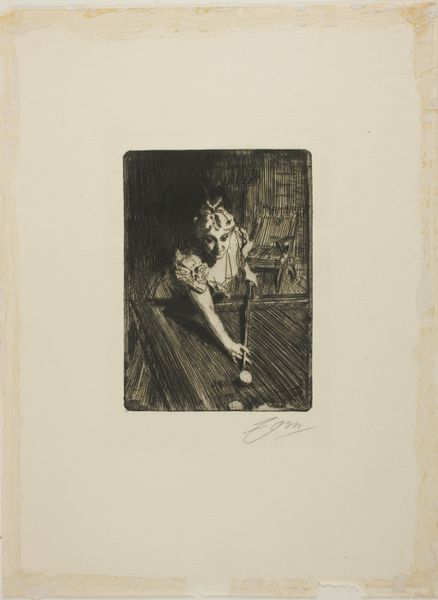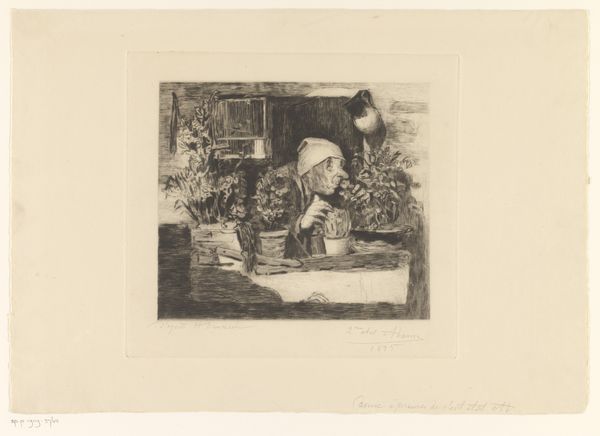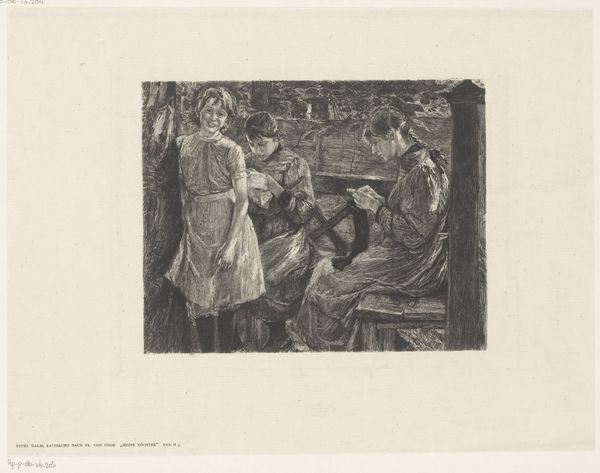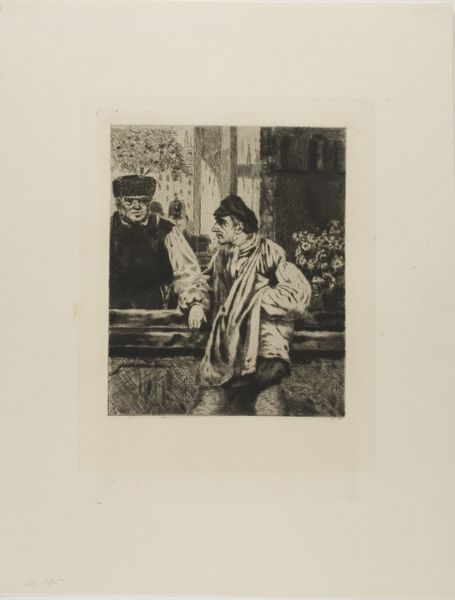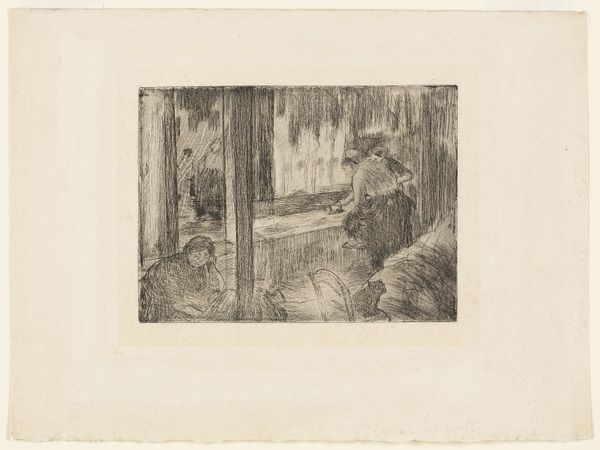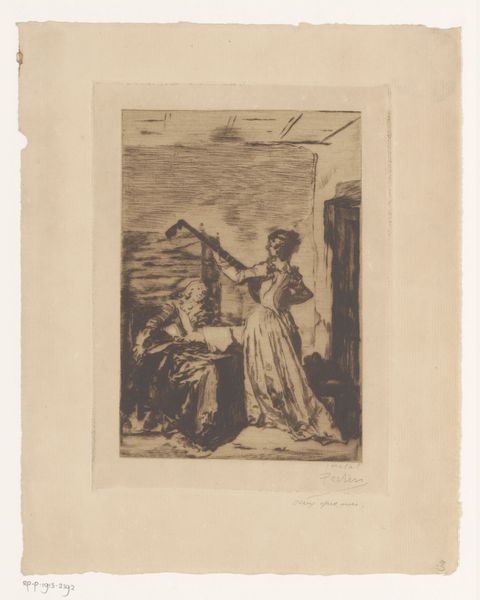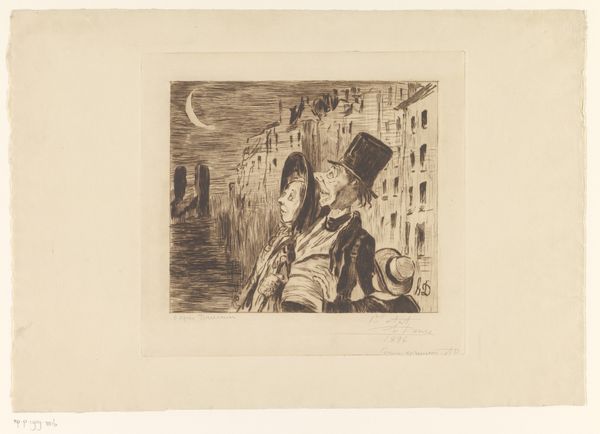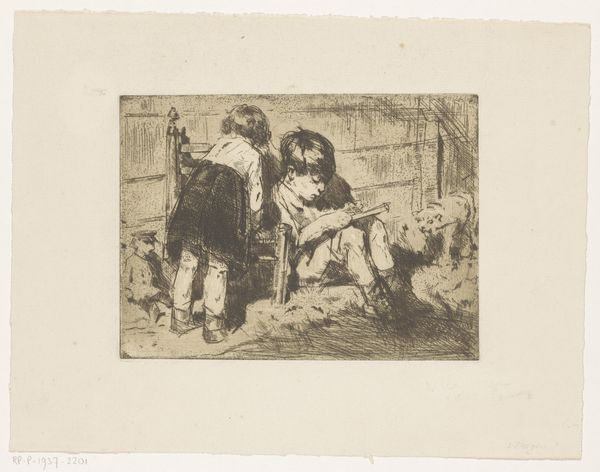
Dimensions: 276 × 196 mm (image/plate); 448 × 330 mm (sheet)
Copyright: Public Domain
Curator: Here we have Anders Zorn’s "Sunday Morning", an etching from between 1892 and 1894, currently residing at The Art Institute of Chicago. Editor: My initial reaction is…intimate. It feels like we're intruding on a very private moment, despite the rather public display here in the museum. There's a certain domestic vulnerability to it. Curator: Yes, Zorn’s print certainly conveys intimacy, which speaks to the broader rise of genre painting that romanticized everyday life. In its time, this slice-of-life portrayal provided insight into the social hierarchy and moral climate of Sweden. Editor: Absolutely. Looking closely, I notice the composition. The etching is stark, almost unfinished. The lines are so fragile. We see a woman in a long dress partially undressed, attending to her hair, while a second woman looks on nearby. I am struck by what this choice implies, as if there’s an unequal exchange between the two, or simply an early morning domestic tension? Curator: It’s worth noting that Anders Zorn was fascinated with portraying women, often showing them in moments of naturalism. We should examine how Zorn's own artistic fame helped cement perceptions of women’s labor at the end of the nineteenth century. Who benefits when these images circulate, after all? Editor: Good question. By capturing a "Sunday Morning", perhaps he attempts to legitimize the female domestic space within a high art context. It makes me wonder about labor distribution and expectations of gender roles that we, even now, continue to project onto our domestic arrangements. Curator: The fact that it’s rendered in etching speaks to accessibility and a broader consumption. As a print, "Sunday Morning" could reach audiences that larger oil paintings wouldn’t. Therefore, in this format, the subject of female intimacy gains further currency, no? Editor: Indeed. I am now aware of my own subjectivity while absorbing its themes. Curator: So as we conclude our time at "Sunday Morning", hopefully it sparked in you a reevaluation of familiar spaces within shifting sociohistorical frameworks. Editor: Precisely. Thank you for challenging our traditional viewpoints to make room for more dynamic interpretation of what exactly lies hidden and illuminated within these artworks.
Comments
No comments
Be the first to comment and join the conversation on the ultimate creative platform.
